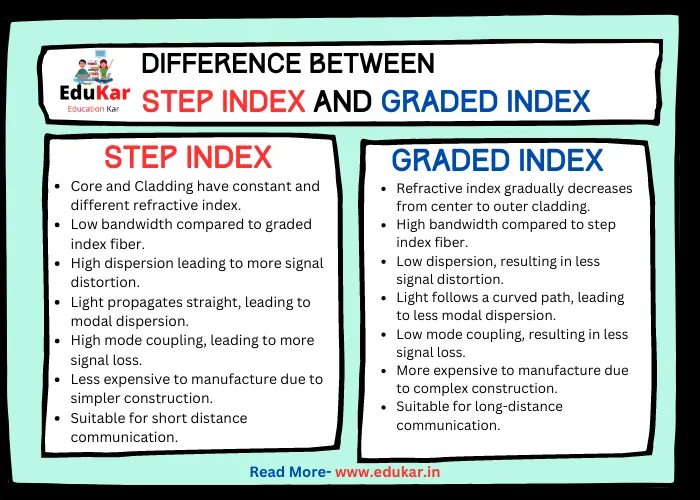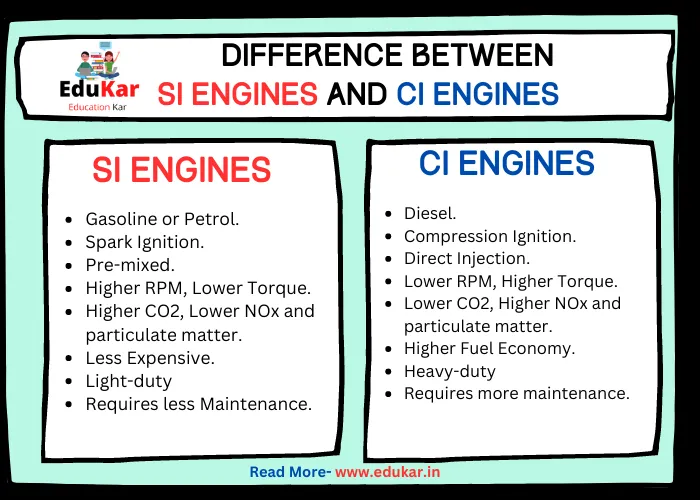Contents
- 1 Introduction
- 2 Step Index Fiber
- 3 Graded Index Fiber
- 4 Difference between Step Index and Graded Index Fiber
- 5 Which is Better: Step Index or Graded Index?
- 6 Future of Fiber optics
- 7 Conclusion
- 8 Important FAQs
- 8.1 What is Step Index Fiber?
- 8.2 What is Graded Index Fiber?
- 8.3 What is the main difference between Step Index and Graded Index Fiber?
- 8.4 Which type of fiber has a higher bandwidth?
- 8.5 Which type of fiber is suitable for long-distance transmission?
- 8.6 Which type of fiber is easier to manufacture?
- 8.7 Which type of fiber is more commonly used?
- 8.8 Can Step Index and Graded Index Fiber be used together in the same system?
Looking to learn about the different types of optical fiber? Discover the key differences between Step Index and Graded Index Fiber in our comprehensive FAQ guide. From their varying refractive index profiles to their suitability for different applications, find out everything you need to know about these two important fiber types. Gain a deeper understanding of the science behind fiber optics and how it impacts modern communication systems. Start reading now and expand your knowledge of this fascinating technology!

Introduction
Fiber optics is a technology that uses thin, flexible fibers made of glass or plastic to transmit information from one point to another through light. These fibers are used to transmit data, voice, and video over long distances with high speeds and low interference. Two types of fiber optic cables are used in this technology – Step Index and Graded Index Fiber.
Step Index Fiber
Step Index Fiber is the most common type of fiber optic cable used in fiber optic communications. It has a core that is surrounded by a cladding layer, which is then covered by a protective layer. The core has a uniform refractive index, and the cladding has a lower refractive index than the core.
Advantages
Step Index Fiber has a higher bandwidth compared to other fiber optic cables, which means it can transmit more data at higher speeds. It is also less expensive to manufacture than other types of fiber optic cables, making it a popular choice for communication networks. Additionally, Step Index Fiber has lower light dispersion compared to other fiber optic cables, which means that the light can travel over longer distances without losing its strength.
Disadvantages
One of the main disadvantages of Step Index Fiber is modal dispersion, which occurs when the light travels through the fiber at different angles. This causes the light to arrive at the end of the fiber at different times, which can lead to signal distortion. Additionally, Step Index Fiber is susceptible to attenuation, which is the loss of signal strength as the light travels through the fiber.
Applications
Step Index Fiber is used in applications such as telecommunications, computer networking, and medical imaging.
Graded Index Fiber
Graded Index Fiber has a core that has a varying refractive index, which is highest at the center and gradually decreases towards the cladding layer. This design allows the light to travel through the fiber at different angles, which reduces modal dispersion.
Advantages
Graded Index Fiber has a higher bandwidth compared to Step Index Fiber, making it ideal for high-speed data transmission. It also has lower modal dispersion, which means that the light can travel over longer distances without distortion. Additionally, Graded Index Fiber has lower attenuation compared to Step Index Fiber, which means that the signal strength is maintained over longer distances.
Disadvantages
Graded Index Fiber is more expensive to manufacture compared to Step Index Fiber, which can limit its use in certain applications. Additionally, Graded Index Fiber has higher light dispersion compared to Step Index Fiber, which can limit its use in certain applications.
Applications
Graded Index Fiber is used in applications such as telecommunications, computer networking, and medical imaging.
Difference between Step Index and Graded Index Fiber
| Features | Step Index Fiber | Graded Index Fiber |
|---|---|---|
| Refractive Index | Core and Cladding have constant and different refractive index. | Refractive index gradually decreases from center to outer cladding. |
| Bandwidth | Low bandwidth compared to graded index fiber. | High bandwidth compared to step index fiber. |
| Dispersion | High dispersion leading to more signal distortion. | Low dispersion, resulting in less signal distortion. |
| Light Propagation | Light propagates straight, leading to modal dispersion. | Light follows a curved path, leading to less modal dispersion. |
| Mode Coupling | High mode coupling, leading to more signal loss. | Low mode coupling, resulting in less signal loss. |
| Manufacturing Cost | Less expensive to manufacture due to simpler construction. | More expensive to manufacture due to complex construction. |
| Applications | Suitable for short distance communication. | Suitable for long-distance communication. |
| Numerical Aperture | Lower numerical aperture (NA) than graded index fibers. | Higher numerical aperture (NA) than step index fibers. |
| Refractive Index Profile | Has a uniform refractive index profile. | Has a parabolic refractive index profile. |
| Signal Attenuation | Higher signal attenuation due to more signal loss. | Lower signal attenuation due to less signal loss. |
Which is Better: Step Index or Graded Index?
The choice between Step Index and Graded Index Fiber depends on the specific application and the trade-offs between their characteristics. While Step Index Fiber is suitable for applications with shorter distances and lower bandwidth requirements, Graded Index Fiber is better suited for high-speed, long-distance transmissions.
Future of Fiber optics
The future of fiber optics is promising, with new developments in technology and manufacturing processes leading to even faster and more reliable communication networks. As the demand for high-speed data transmission continues to grow, the use of fiber optic cables will become even more widespread and essential in various industries.
Conclusion
Step Index and Graded Index Fibers are two types of fiber optic cables that are used in fiber optic communications. Step Index Fiber has a uniform refractive index and is less expensive to manufacture, but is susceptible to modal dispersion and attenuation. Graded Index Fiber has a varying
Important FAQs
What is Step Index Fiber?
Step Index Fiber is a type of optical fiber where the refractive index is constant across the core and abruptly changes at the cladding interface.
What is Graded Index Fiber?
Graded Index Fiber is a type of optical fiber where the refractive index is gradually varied across the core, with the highest index at the center and decreasing towards the cladding.
What is the main difference between Step Index and Graded Index Fiber?
The main difference is the way the refractive index is varied across the core. Step Index Fiber has a constant index, while Graded Index Fiber has a varying index that decreases towards the cladding.
Which type of fiber has a higher bandwidth?
Graded Index Fiber has a higher bandwidth due to the gradual change in refractive index, which reduces the modal dispersion compared to Step Index Fiber.
Which type of fiber is suitable for long-distance transmission?
Both Step Index and Graded Index Fiber can be used for long-distance transmission, but Graded Index Fiber is generally preferred due to its lower modal dispersion and higher bandwidth.
Which type of fiber is easier to manufacture?
Step Index Fiber is easier to manufacture than Graded Index Fiber because it only requires a single doping process to create the constant refractive index.
Which type of fiber is more commonly used?
Graded Index Fiber is more commonly used in modern optical communication systems due to its higher bandwidth and lower modal dispersion.
Can Step Index and Graded Index Fiber be used together in the same system?
Yes, Step Index and Graded Index Fiber can be used together in the same system, but the coupling efficiency may be lower due to the difference in refractive index profiles.





